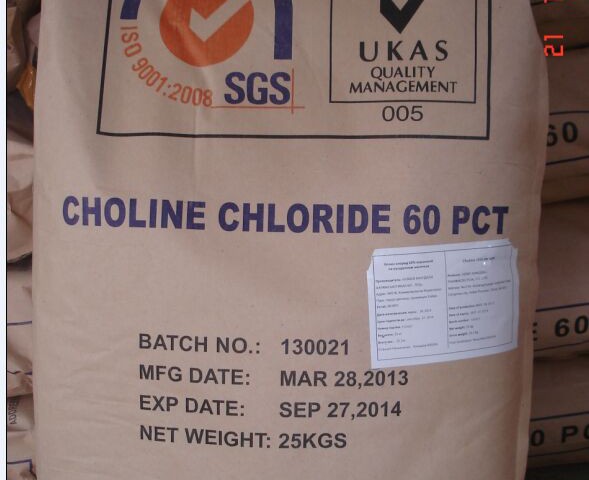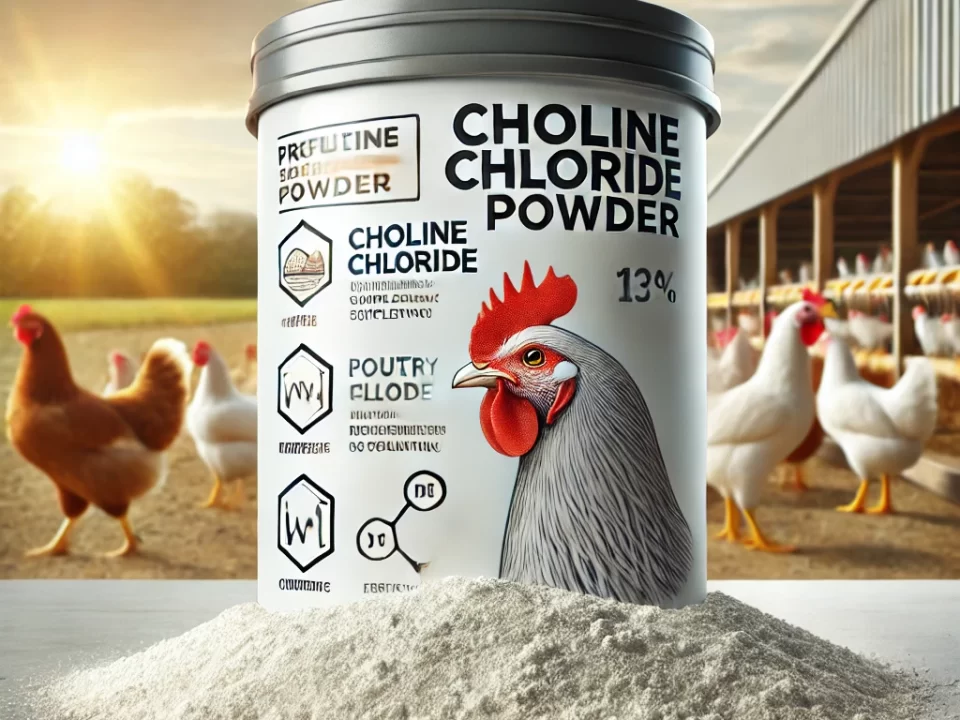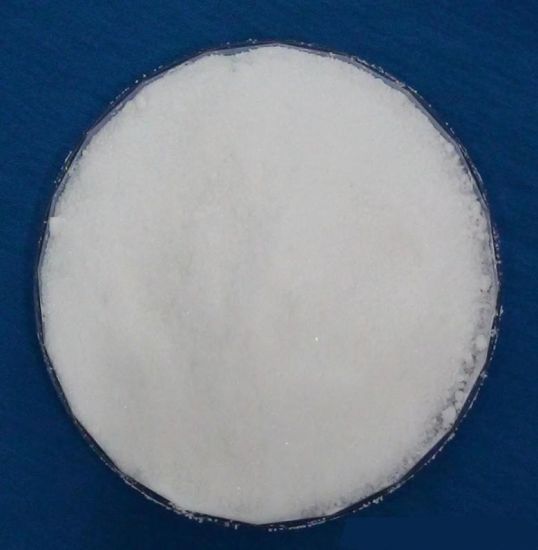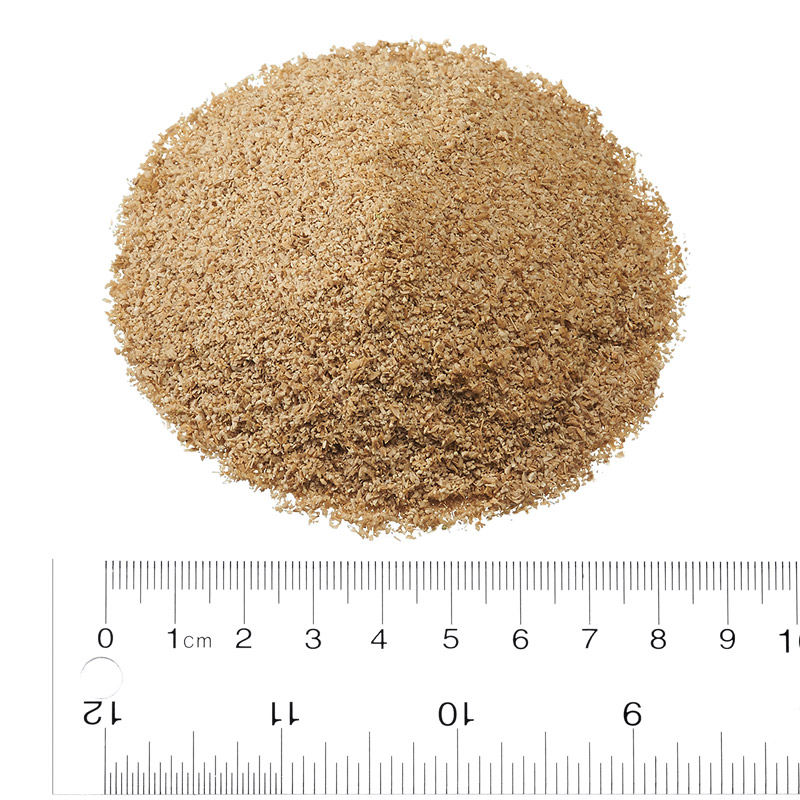Choline chloride-Indispensable Performance Promoter in poultry

Application of feed yeast in animal feed
October 5, 2016
Allicin powder for poultry/fish/chicken feed additives
October 14, 2016Choline (typically in the type of Choline chloride) is one of the B categories of vitamin. It is acetylcholine in the biological company. It is the elements of lecithin and nerve acid fat. It is used by the majority of animals as a precursor of acetyl choline, which affects the transmission of impulses from nerves to muscles. It is also used as a source of methyl groups. In feed, the material of natural choline chloride is restricted. It can not please complete need for the animal growing.Therefore, choline chloride is extensively utilized as feed additive at house and adroad.It will stimulate the animal or poultry’s growth, placed on their weight quickly and increase up the body’s resistance function. It has prominence impacts on enhancing the quality and amount of eggs and meat. On the contrary, lack of choline may cause liver illness, slowed down development, perosis, reduced egg-laying rate and increased mortality.
Choline is vital substance for growth of animals. It is basic element of cell membrane, and important element for the transmission of impulses.
Choline is very important nutrients for health of animals, it can promote the fat metabolic process in the liver (so-called lipotropic action); can promote the bio-synthesis of phosphatidycholine which can accelerate the development and enhance breeding & hatchability of animals.
Choline can boost the usage effectiveness of feed ingredients. As a methyl group source, it can promote the reformulation of amino acid, and sometimes even can change a few of the Methionine.
Because there is no consistency in the choline content in the natural feedstuffs and likewise their bioavailability is not predictable. Choline chloride are extensively used as choline Supplements.
Usually categorized as a B-complex vitamin (referred to as vitamin B4 in some publications), choline influences the metabolic process of carotene and vitamin A in animals. It is in reality an important component for ensuring the appropriate performance of the nerve system. Choline plays an essential function in a variety of different methods:
by building and keeping cell structures;
by forming acetylcholine for the transmission of impulses;
by preventing perosis in poultry; and
by developing lecithin.
Apart from promoting the fat metabolic process in the liver (the so-called lipotropic action), choline is likewise a methyl group source used for changing homocysteine into the important amino acid methionine.
| Characteristics | |
| Apparent Density | 416.5 to 480.6kg/m3 (26 to 30lbs/ft3) |
| Particle Size – below 850 um (less than 20 mesh) | 70% Minimum |
| Odour | Grainy with slight amine odour |
| Colour | Light to tannish brown |
| Angle of repose (less than 2.0% moisture) | 30 degrees |
usages of Choline chloride
1, to prevent the accumulation of fat in the liver and kidney, and tissue pathological changes
2, the system and the disease resistance of livestock and poultry
3, improve livestock growth rate and laying rate, survival rate of piglets
4, fish for long, and promote the breeding, improve the survival rate
5, maintain the normal function of animal of the nervous system
Choline chloride 50% silica base
Choline chloride 50% silica base is obtained by absorbing choline chloride liquid on an artificial silica fine powder.
Choline Chloride content: 50% minutes
Loss on drying: 20% max
TMA: 300PPM max
Particle size (60 mesh): 95% min passes
Look: Pure white power
Packaging: usually in 25kg PEPA bags or Kraft paper bags with two PE liners.
Choline chloride 70%/ 75% liquid
Choline chloride 70%/ 75% liquid is a choline chloride aqueous solution. Suitable for direct spraying to premixes and feeds used for manufacturing choline chloride dry kind.
Choline Chloride material: 70%/ 75% minutes
PH: 6.5-8
Ethylene glycol: 0.50% max
Trimethylamine (TMA): 300 PPM max
Ash: 0.20% max
Heavy metal: 0.002% max






